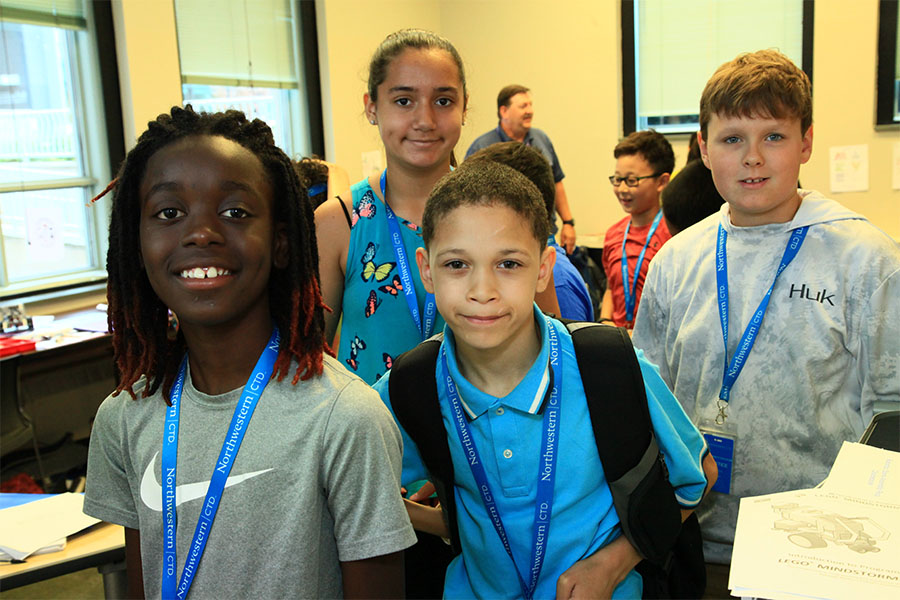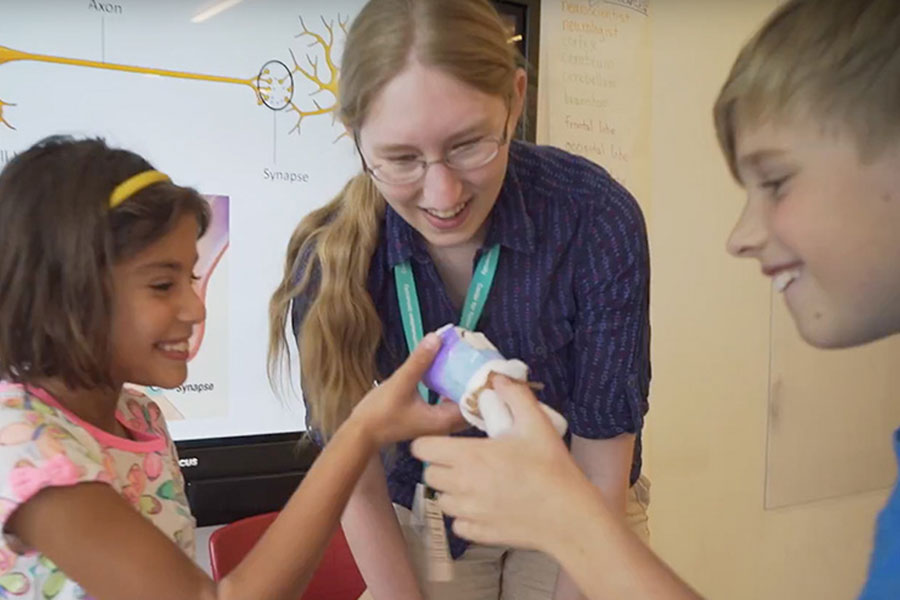Back to the Future of Education
Northwestern professor developing interactive history education tool used at CTD last summer
By Ed Finkel
Spencer Striker draws from the past to develop the educational tools of the future.
To draw in students who find history dry, particularly when presented in typical teacher-to-student lecture mode, the Northwestern digital media design professor has created an interactive, cross-platform digital learning series called “History Adventures, World of Characters.” A couple of CTD classes gave the product a test-drive last summer.
 Striker, who teaches in the School of Communication’s outpost on NU’s Qatar campus, has brought to bear various threads in his background to create the project. He received a bachelor’s degree in history and film production from the University of Texas, a master’s degree in new media production (as it was then called) from Indiana University, and a PhD in education technology from the University of Wisconsin.
Striker, who teaches in the School of Communication’s outpost on NU’s Qatar campus, has brought to bear various threads in his background to create the project. He received a bachelor’s degree in history and film production from the University of Texas, a master’s degree in new media production (as it was then called) from Indiana University, and a PhD in education technology from the University of Wisconsin.
“History is a passion of mine, but I’m not an historian—I work with very talented historians on my projects,” he says. “I’ve always been interested in the topic of history and using media to communicate history. As the media has evolved in the last 25 years or so, my idea has been to stay with the most cutting-edge technology. That merged, and fused, with an interest in education, and the formal study of education, with applied research about digital media and learning, using the latest tools to enhance learning outcomes.”
“In a way, History Adventures is my dream project,” Striker says. “It allows me to fuse my favorite things. It is all about trying to create immersive, engaging, interactive learning experiences for young people to engage with history. It’s a way to create an answer to the unfortunate refrain, when young people say, ‘History is boring.’ History is a lot of things, but it’s not boring. As a famous historian once said, ‘The history of the world is written in red ink.’ It’s a horrible, bloody affair—and yet full of great things, like inventions, along with setbacks.”
While undertaking his PhD in Madison, Striker gained exposure to the literature around the potential of gamified learning. After obtaining his degree, he worked for a while in Silicon Valley on a project called Galxyz, a space adventure in which students would travel the universe on quests—and in the process, learn next-generation science standards. This taught Striker how to build teams and execute on an ambitious learning concept, although the budget of about $4 million did not entirely prepare him for doing similar work once he returned to academia. “With History Adventures, the budget hasn’t been that big,” he says. “At the same time, I haven’t been driven by market necessities. We have more freedom, and more time to explore and build the project.”
The tools Striker and his team use to create compelling content include a narrative design and fictional characters based on people who would have been alive in the time and place in question, based on the concept of “situated meaning,” which is “a fancy term for saying, appreciating history as a lived experience,” he says. “There are emotional stakes. When we’re able to convey that to a student, it changes the perspective from an abstract series of names and dates into this high-stakes, complicated experience.”
History Adventures also uses animation and interactivity to make history more compelling, reminding students of video games they like, Striker says. “What we’re trying to get at, ultimately, is an interest-driven learning experience,” he says. “We don’t have to tell you, ‘You have to do your history homework’—rather, you have some intrinsic motivation.”
In addition to removing the student from the old-school lecture format based on a textbook—focused on memorizing names and dates, and leading to a quiz or test—the interactive software enables students to explore graphics like timelines and maps in an interactive way, Striker says. In the Plague of Athens module, students are able to zoom in on an infographic about the Hippocratic Oath and see transcriptions, annotations and callouts. “You get the ability to explore an ancient document with an enhanced data overlay,” he says.
The software presents students with difficult choices and provides an interactive, choose-your-own-adventure type of approach in solving them, Striker says. “You can go down this path or that path,” he says. “That’s an important way that digital media design can enhance history.”
With all of this rich detail, however, Striker and his team face challenges in producing the material at the necessary scale to be more than a once-in-a-while diversion for students and teachers. “We often get very, very good feedback about the product design itself. These tend to work in the classroom. They make the experience much more engaging. You get a ‘wow’ factor,” he says. “But the teacher will say, ‘That was great, but I have all this content I have to teach.’ ”
Which means History Adventures needs a lot more content before it can progress from being an augmentation or a supplement to a core learning solution, Striker says. “A big part of that [hurdle] is producing a lot more content but without sacrificing the quality,” he says. “You could produce a lot at mediocre quality, but that’s not what we want. The advantage of building incrementally, in academia, is that as we’re going, we’re testing.”
Another ongoing challenge will be accessibility, given that a wide variety of platforms can be used for such content, and it’s difficult to write code that translates easily, Striker says. “The most platforms with the least amount of back-end [work]—it’s like El Dorado,” he says. “You always, always have to do tons of custom work to get things to run on different platforms.” And while a compelling virtual reality experience seems like the most promising way to deliver the content most impactfully, he adds, it’s also the least accessible in terms of educational equity.
In addition to being used in “a good number” of classrooms, as part of winning the grant from Northwestern’s INVO—which held a campus-wide search for faculty-led educational technology innovations—Striker and his team were connected with CTD “for the very practical purpose of having CTD test our products,” he says. “It’s a very good fit for the product series.”
Last summer, a course called “Human Evolution and Epidemiology” made use of the Plague of Athens segment from the Global Pandemics series to augment and flesh out lessons about the epidemics of the ancient world. Another class, “World History Honors,” taught by online instructor Harold Wise, used essentially all of the History Adventures products.
“He started plugging our products into the curriculum,” Striker says. “He used Revolutions for the period from 1750 to 1900. … With Empires it was the same thing, taking the six characters and matching them up against topics he wanted to cover. He also used, when he was doing classical history, the Plague of Athens.” At the end, CTD produced a report on the experience that Striker found “quite thorough and very helpful” in thinking through how to keep improving the product and where to take it next.
Upcoming modules include a second installment in the Pandemics series about the Black Death, and—if the second NEH grant comes through—a new product called America’s City that will be set in New York City between 1770 and 1800, during and shortly after the Revolutionary War, which Striker hopes to have up and running by the country’s 250th anniversary in 2026.
“We’re going to populate it with all kinds of interesting characters from the time period,” he says, giving students a sense of “how people had very difficult choices.” The goal is to make New York City “during this turbulent, formative time period come to life for students in all its excitement, difficulty, and complexity!”

